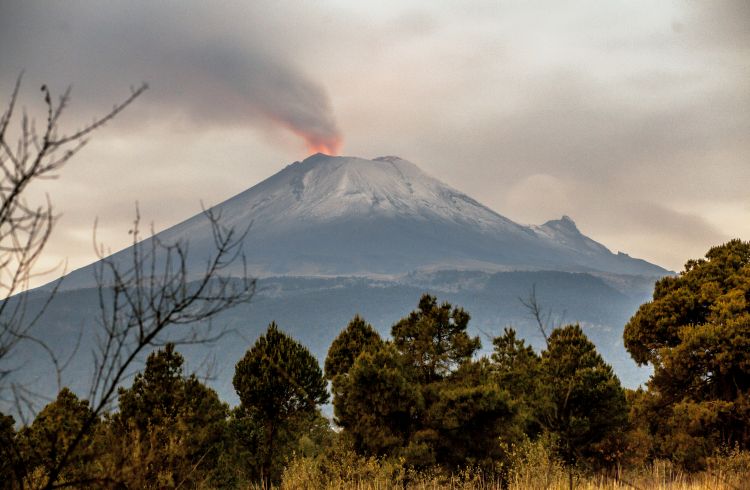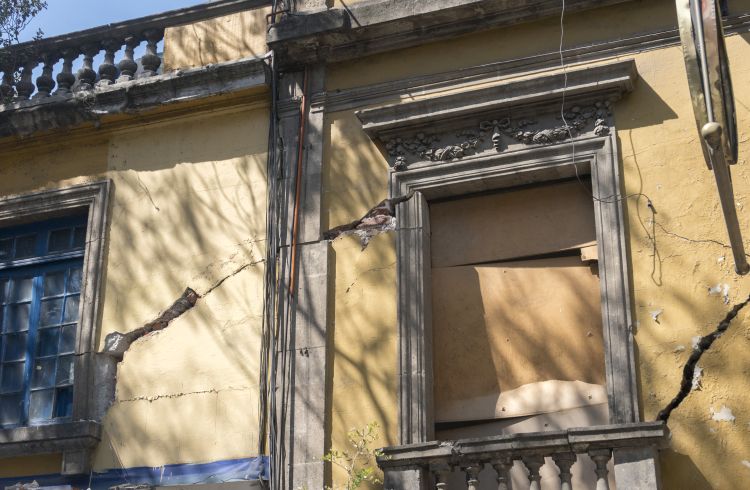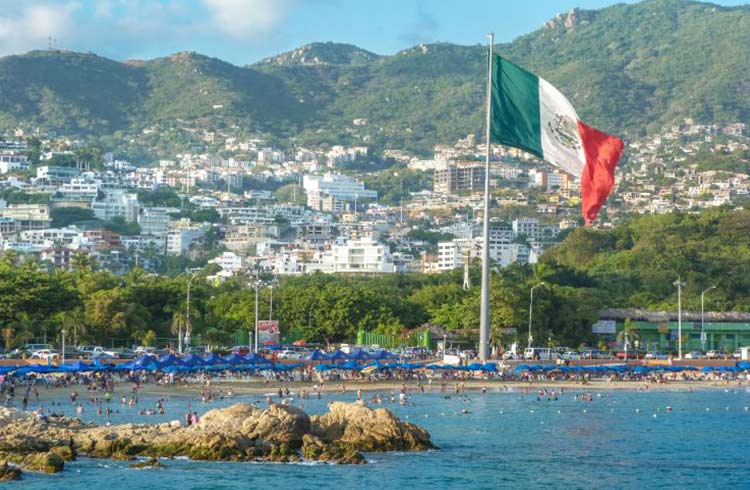Avoiding Natural Hazards in Mexico: How to Stay Safe
Mexico has a number of natural hazards, from hurricanes to volcanic eruptions and dangerous rip currents; it's important travelers know how to prepare and stay safe.
 Photo © GettyImages/©fitopardo.com
Photo © GettyImages/©fitopardo.com
Hurricanes
Like much of the Caribbean, Mexico's hurricane season is between June and November, with most activity between August and October, affecting the Pacific Coast, Yucatan Peninsula and Gulf Coast. Severe storms, mudslides, landslides, and flooding usually follow hurricanes, with coastal areas experiencing the most damage.
If a hurricane strikes while you are in Mexico, you should get plenty of warning so you can prepare to evacuate or ride it out. Keep an eye on local news reports and social media, and always follow instructions from local authorities. For more tips on how to prepare, read our article on hurricane safety.
Earthquakes
Due to Mexico's location, on the Cocos-North American plate boundary in the Pacific Ring of Fire, the country has a history of earthquakes; many of them catastrophic, causing significant damage and taking many lives. Some of them have caused tsunamis which have flooded miles inland.
On average, Mexico experiences 4,200 earthquakes each year with a magnitude of 4.5 or more. Such is the strength of some of these earthquakes that in 2017, a 8.2 magnitude quake ruptured the Cocos tectonic plate.
Most of Mexico's quakes occur on the Pacific Coast, home to popular destinations such as Puerto Vallarta, Sayulita and Acapulco.
While the likelihood of experiencing a major earthquake in Mexico is low, it's important that you know what to do should you find yourself rattling and rolling.
For more information, read our expert tips on earthquake preparation, survival and post-event tips.

Volcanoes
There are approximately 3,000 volcanoes in Mexico, however, only 48 are considered active. Popocatepetl, near Mexico City, is Mexico's largest volcano, and roared to life In December 2018, spewing ash and volcanic gases into the air. Mexico's National Center for Prevention of Disasters rates Popocatepetl at a level 2 alert (showing signs of unrest), and the volcano is closed off to the public due to the ongoing risk of pyroclastic material eruption. On the Jalisco/Colima border, 77 miles (125km) south of Guadalajara, Volcan de Colima is also closed to the public, with a 5-mile-radius (8km) exclusion zone in place.
Pay attention to local news reports and government warnings about any volcano in Mexico. While hiking up a volcano might be a great way to see Mexico's natural landscape, it's not a great place to be if the volcano decides to wake up. Do not disobey any volcano closures.
Air pollution
In major cities such as Mexico City, Monterrey, Puebla, Toluca and Salamanca, air pollution can be a concern for travelers, particularly those with respiratory difficulties. Mexico City's high altitude, and its location in a valley surrounded by mountains and volcanoes, allow air pollution to linger. The pollution is at its worst between March and June. Anyone with lung, respiratory or heart problems should be cautious when traveling during these months and carry the necessary respiratory relief medications.
Dangerous wildlife in Mexico
Aside from the obvious risk of mosquitos in parts of Mexico, there are other critters that can bite or give you a nasty sting.
Snakes
Mexico is home to hundreds of snake species, a small number of which are dangerous to humans, such as coral snakes and vipers. If you are planning to visit jungle areas or hike in mountainous spots, always wear closed-in shoes, and stick to well-worn paths. Usually, the vibration from your footfall tends to send any snake on its way. Should you be bitten by a snake, immobilize the affected limb and seek medical treatment immediately. Carry a travel first aid kit.
Scorpions
There are more than 200 species of scorpion in Mexico but, thankfully, only eight are dangerous to humans. The warmer months are the prime time for scorpion activity, as they thrive in the tropical heat. Mostly nocturnal, you'll rarely see these guys when you're out and about during the day. Scorpions will only sting if they feel threatened, so if you leave them alone, they will leave you alone.
Unfortunately, scorpions like spiders, like to hide in dark, warm places such as shoes, sleeping bags and bags. Before putting your shoes on each day (particularly if you are in a scorpion-prone area) give them a good tap and shake. Open up and shake your sleeping bag if you are camping. Take care when looking in your bags for things and keep them secured so scorpions can't crawl in.
If you do get stung by a scorpion, apply a cold pack or ice to the sting site and seek medical attention.
Ocean safety in Mexico
Each year, locals and visitors drown at popular beach holiday spots across Mexico due to the conditions, rips or drunken misadventures.
Puerto Vallarta has rock-lined shores, which can make swimming or snorkeling hazardous, especially if water conditions are a bit rough. Jellyfish can also be a hazard, leaving you with a nasty sting.
Strong rip currents and swells can swiftly sweep you out to sea in places like Cabo San Lucas, Puerto Vallarta and many other coastal holiday spots.
The majority of beaches across Mexico aren't patrolled so if you are staying somewhere without lifeguards, always ask locals where the safest swimming spot is, or only swim where lifeguards have designated as the safest spot on the beach. Some patrolled beaches have a colored flag system which lets you know if it's safe to swim or not.
If the beach is closed, it's closed for a good reason. It may not look rough out there, but sometimes continuous rips can make conditions unfavorable for using the ocean.
Should you find yourself getting carried out in a rip, here are some tips to help you survive:
- Don't panic. A rip will flow against the waves, back out to sea, so if you swim parallel to the beach into the breaking waves, after just a few meters you can often swim out of it.
- You can also float and go with the rip, because it will often disperse just beyond the breakers; as long as you are a strong swimmer you can get yourself back to shore.
- If you are in trouble and need help, float, raise one arm up in the air, wave and call for help.
Related articles
Simple and flexible travel insurance
You can buy at home or while traveling, and claim online from anywhere in the world. With 150+ adventure activities covered and 24/7 emergency assistance.
Get a quote
No Comments